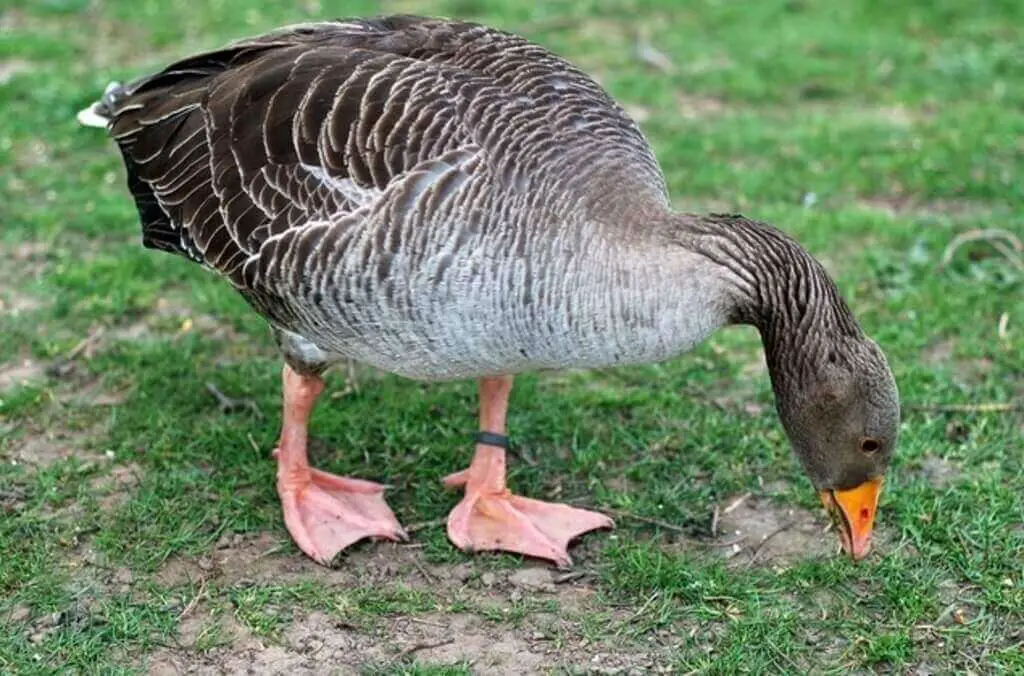Welcome to an exploration of avian diets! In this journey, we delve into a fascinating question: Are birds herbivores? Join us as we decode the complexities of bird diets, uncovering surprising truths and shedding light on the age-old debate.
From seeds to foliage, we unravel the mysteries behind what fuels our feathered friends, providing insights that may reshape your understanding of avian nutrition. Get ready to embark on a journey of discovery as we unravel the truth behind bird diets!
Table of Contents
- 1 Key Takeaways
- 2 Are Birds Herbivores
- 3 Types of Herbivorous Birds
- 4 Adaptations for a Plant-Based Diet
- 5 Seed-Eating Birds
- 6 Fruit-Eating Birds
- 7 Nectar-Feeding Birds
- 8 Leaf-Eating Birds
- 9 Grass-Eating Birds
- 10 Nut-Eating Birds
- 11 Bud-Eating Birds
- 12 Insectivorous Birds with Herbivorous Tendencies
- 13 Frequently Asked Questions
- 13.1 Can herbivorous birds survive on a solely plant-based diet?
- 13.2 How do herbivorous birds obtain all the necessary nutrients from plants?
- 13.3 Do herbivorous birds have any specific adaptations for digesting plant material?
- 13.4 Are there any specific types of plants that herbivorous birds prefer to eat?
- 13.5 Can herbivorous birds switch to a carnivorous diet if necessary?
- 14 Conclusion
- 15 Author
Key Takeaways
- Herbivorous birds have longer and more complex digestive tracts.
- Adaptations in beaks and digestive systems allow herbivorous birds to thrive.
- Seed-eating birds have specialized beaks to crack open seeds.
- Fruit-eating birds aid in seed dispersal and plant colonization.
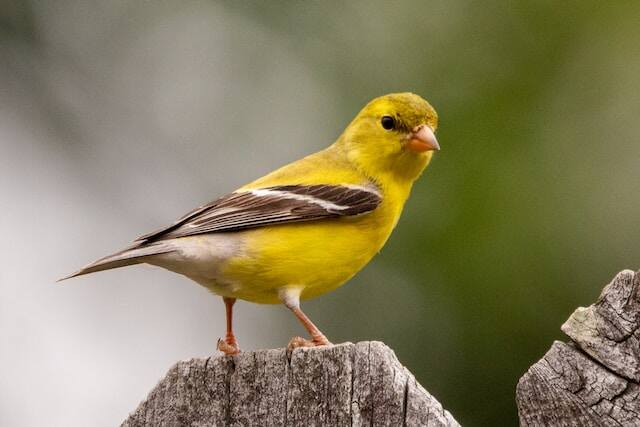
Are Birds Herbivores
Birds have diverse dietary preferences, and while some species are herbivorous, not all birds fall into this category.
Herbivorous birds consume plant-based diets, including seeds, fruits, nectar, grass, buds, and even insects.
However, it’s important to note that not all birds are herbivores, as many species have omnivorous or carnivorous diets.
Types of Herbivorous Birds
Various species of birds, such as parrots, finches, and doves, exhibit herbivorous dietary preferences, consuming an assortment of seeds, fruits, and vegetation. This highlights the remarkable diversity of herbivory within avian populations.
Birds have evolved specialized beak adaptations to suit their dietary needs.
For instance, finches possess short, thick beaks that enable them to efficiently crack open seeds, while parrots possess strong, curved beaks that allow them to break into tough fruits.
In addition to beak adaptations, herbivorous birds have also developed specific digestive system adaptations.
Their digestive tracts are longer and more complex compared to carnivorous birds, enabling them to extract maximum nutrients from plant material.
These adaptations for a plant-based diet allow herbivorous birds to thrive in environments where plant resources are abundant.
Transitioning to the subsequent section, these adaptations demonstrate the remarkable ways in which birds have adapted to their plant-based diets.
Adaptations for a Plant-Based Diet
An array of morphological and physiological adaptations enable certain avian species to thrive on a diet predominantly composed of plants, much like a well-designed machine that efficiently processes and utilizes vegetal resources.
Birds with specialized beaks have evolved to suit their plant-based diet.
For instance, the curved beaks of hummingbirds allow them to access nectar from flowers, while the long, slender beaks of toucans aid in plucking fruits from branches.
Additionally, some birds have developed adaptations in their digestive system to extract maximum nutrients from plant matter.
For example, they possess large crops and gizzards that aid in the breakdown and digestion of fibrous vegetation.
Furthermore, some herbivorous birds have a unique gut microbiome that assists in the fermentation of plant material.
These adaptations collectively ensure that these birds can efficiently obtain and utilize the necessary nutrients from their plant-based diet.
Transitioning to the subsequent section, seed-eating birds have their own set of adaptations.
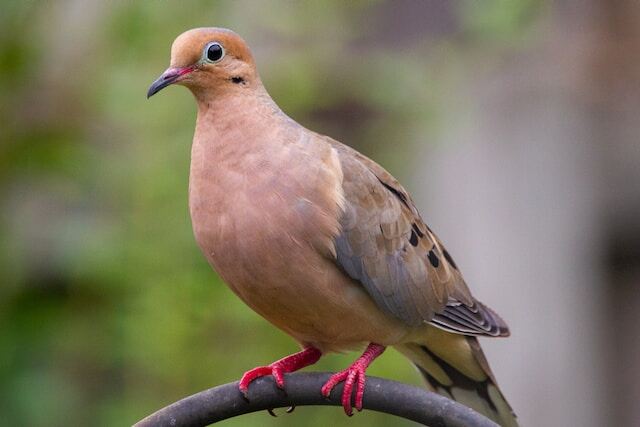
Seed-Eating Birds
Seed-eating avian species have developed specialized beaks to efficiently crack open and extract the nutrient-rich contents of seeds, resembling intricate tools designed for precise and effective seed consumption.
There are various types of seed-eating birds, each with their unique adaptations.
For instance, finches possess short, thick beaks that allow them to crack open tough seed shells, while sparrows have conical beaks that help them efficiently extract seeds from grasses and plants.
This process aids in the distribution and colonization of plants across different habitats, contributing to the overall health and diversity of ecosystems.
Transitioning into the subsequent section about fruit-eating birds, it is worth exploring how these avian species contribute to the ecosystem through their feeding habits.
Fruit-Eating Birds
Fruit-eating avian species have evolved beaks that are specifically adapted for the consumption of fruits, resembling finely-tuned instruments designed to pluck, peck, and extract the succulent contents of various fruits.
These birds exhibit a wide range of fruit preferences, with some species favoring juicy berries, while others opt for larger fruits such as figs or melons.
Their foraging techniques vary depending on the type of fruit they consume.
Some birds use their beaks to puncture the skin of the fruit, while others employ a more delicate approach, gently plucking individual fruits from trees.
Additionally, fruit-eating birds play an important role in seed dispersal, as they often swallow the seeds along with the fruit and later excrete them in a different location.
This facilitates plant colonization and gene flow.
Transitioning to the subsequent section about nectar-feeding birds, these avian species exhibit fascinating feeding strategies that involve consuming floral nectar.
Nectar-Feeding Birds
Nectar-feeding birds, like the hummingbird, have developed specialized beaks to extract the sweet nectar from flowers, showcasing their remarkable adaptation to a unique feeding strategy.
These birds are known for their dietary preference for nectar, which serves as their primary source of nutrition.
They have evolved long, slender beaks that allow them to reach deep into flowers and extract the sugary liquid.
Nectar is rich in carbohydrates, providing these birds with the energy they need for their active lifestyles.
To attract nectar-feeding birds, flowers have evolved bright colors and sweet fragrances, acting as beacons for these feathered pollinators.
Additionally, some flowers have developed tubular shapes that perfectly fit the birds’ beaks, ensuring efficient nectar extraction.
The symbiotic relationship between nectar-feeding birds and flowers is vital for both species’ survival.
Transitioning to leaf-eating birds, their dietary preferences differ significantly, highlighting the diverse feeding strategies within the avian world.
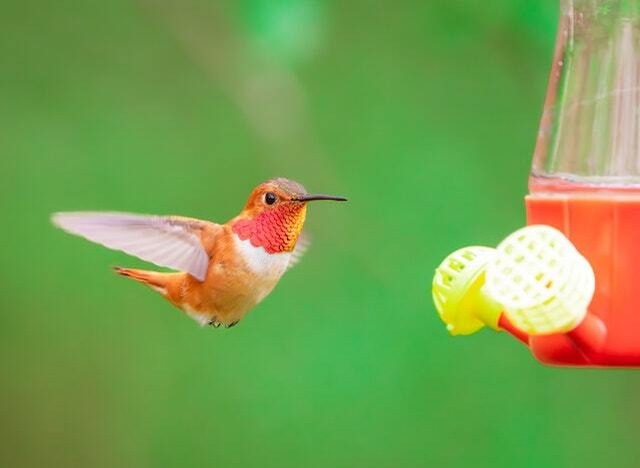
Leaf-Eating Birds
These birds exhibit specific behaviors and diet preferences that contribute to their leaf-eating habits.
Leaf-eating bird behavior includes foraging in trees and shrubs, meticulously selecting leaves, and employing various techniques to extract nutrients.
They often pluck leaves from plants, tear them into smaller pieces, and swallow them whole or chew them before ingesting.
Some species even use their beaks to strip bark and twigs, allowing access to tender leaves.
Leaf-eating birds have developed specialized digestive systems to efficiently process the high fiber content of leaves, extracting nutrients and enzymes required for their survival.
These birds contribute to the recycling of nutrients and the dispersion of seeds, influencing plant growth and regeneration.
Transitioning into the subsequent section about grass-eating birds, it is important to explore the diet preferences and behaviors of these avians to gain a comprehensive understanding of herbivorous bird behavior.
Grass-Eating Birds
Grass-eating birds, through their grazing habits and specialized digestive systems, contribute significantly to the maintenance and growth of grassland ecosystems.
These herbivorous birds play a crucial role in controlling the vegetation and preventing the domination of certain plant species.
They help in maintaining the balance of the ecosystem by dispersing seeds and providing nutrients through their droppings.
Here is a table showing some examples of grass-eating birds and their specific adaptations for consuming grass:
| Bird Species | Grass-Consuming Adaptations | Preferred Grass Type |
|---|---|---|
| Canada Goose | Long neck for reaching grass | Kentucky bluegrass |
| Cattle Egret | Strong beak for tearing grass | Bermuda grass |
| Grasshopper Sparrow | Short digestive tract for efficient digestion | Timothy grass |
These birds have evolved unique characteristics that allow them to efficiently consume grass and extract nutrients from it. They are an essential part of the grassland ecosystem, playing a vital role in its maintenance and growth.
Moving on to the subsequent section about nut-eating birds, these avians showcase a different dietary preference and feeding behavior.
Nut-Eating Birds
Nut-eating avians possess specialized adaptations for consuming nuts, but how do they efficiently extract the nutrients from these hard-shelled fruits?
Various types of nut-eating birds have evolved unique anatomical features and feeding behaviors to tackle this challenge.
For instance, the powerful beaks of parrots and macaws enable them to crack open even the toughest nut shells.
Some species, like the woodpecker finch, use tools such as twigs to pry open nuts. Additionally, these birds have strong jaw muscles that aid in the grinding and chewing of nuts.
The benefits of a nut-based diet for these birds are numerous. Nuts are rich in fats, proteins, and essential minerals, providing a concentrated source of energy.
Furthermore, nuts often have a long shelf life, allowing these birds to store food for times when resources are scarce.
Transitioning to the next section, bud-eating birds possess their own unique adaptations for extracting nutrients from plant buds.
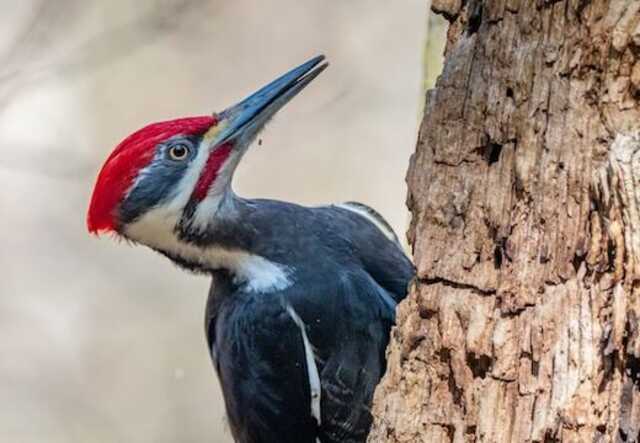
Bud-Eating Birds
Bud-eating avifauna have developed specialized adaptations and feeding strategies to efficiently extract nutrients from the tender, undeveloped plant buds.
These birds exhibit unique bud eating behavior, which involves carefully selecting and consuming buds of various plant species.
The nutritional value of buds is a key factor in their diet, as buds are rich in essential nutrients such as proteins, carbohydrates, and vitamins.
To extract these nutrients, bud-eating birds employ specific feeding techniques, including delicate pecking and nibbling, to avoid damaging the bud and ensure maximum nutrient intake.
Additionally, some species have evolved beak shapes and sizes that are perfectly suited for bud consumption.
This specialized feeding behavior allows bud-eating birds to thrive by capitalizing on the nutritional benefits provided by these plant structures.
Transitioning to the subsequent section about ‘insectivorous birds with herbivorous tendencies,’ these avian species demonstrate a unique combination of dietary preferences.
Insectivorous Birds with Herbivorous Tendencies
Insectivorous birds with herbivorous tendencies display a unique combination of dietary preferences, showcasing their ability to adapt and exploit food sources from both animal and plant kingdoms.
These birds primarily feed on insects, but also consume a significant amount of plant material.
Their diet variations can be influenced by factors such as seasonal availability of insects and the nutritional content of plants.
Insectivorous birds with herbivorous tendencies have been observed to consume a variety of plant matter, including fruits, seeds, buds, and even leaves.
This behavior is believed to provide them with additional sources of nutrients, especially during times when insects may be scarce.
The ability of these birds to switch between insectivory and herbivory highlights their adaptability and resourcefulness in obtaining the necessary nutrients from diverse food sources.
Frequently Asked Questions
Can herbivorous birds survive on a solely plant-based diet?
Herbivorous birds can survive on a solely plant-based diet as they have evolved specialized anatomical and physiological adaptations to efficiently process and extract nutrients from plants. They obtain essential nutrients such as carbohydrates, proteins, and vitamins from various plant sources.
How do herbivorous birds obtain all the necessary nutrients from plants?
Herbivorous birds meet their nutritional requirements by consuming a variety of plant materials, including leaves, fruits, seeds, and nectar. They have digestive system adaptations, such as specialized beaks and a longer digestive tract, to efficiently extract nutrients from plant matter.
Do herbivorous birds have any specific adaptations for digesting plant material?
Herbivorous bird adaptations allow them to efficiently digest plant material and obtain necessary nutrients. These adaptations include specialized beaks and digestive systems that can break down cellulose, fermentation chambers to extract nutrients, and efficient absorption mechanisms for vitamins and minerals.
Are there any specific types of plants that herbivorous birds prefer to eat?
Herbivorous birds prefer certain types of plants, such as fruits, seeds, and leaves. This preference has a significant impact on plant populations, as birds aid in seed dispersal and can influence plant community composition.
Can herbivorous birds switch to a carnivorous diet if necessary?
Birds’ dietary flexibility allows for adaptation to a carnivorous diet if necessary. However, the impact of such a shift on herbivorous birds is not fully understood and merits further investigation to assess potential physiological and ecological consequences.
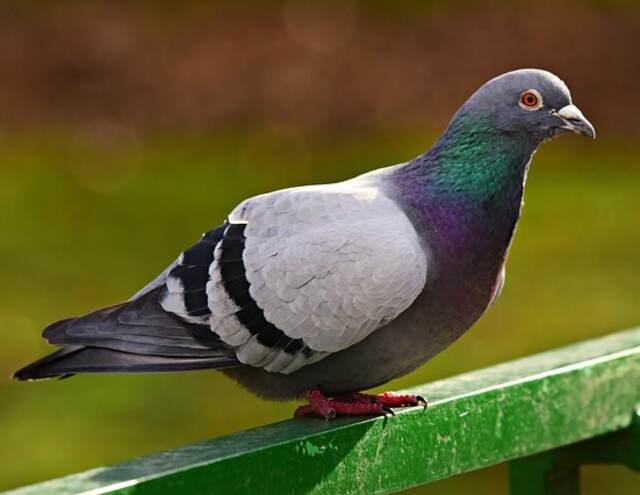
Conclusion
Herbivorous birds are a diverse group that have adapted to consume various plant-based diets. They have evolved specific adaptations to aid in the consumption of different plant parts, such as specialized beaks and digestive systems.
Some herbivorous birds primarily feed on seeds, while others focus on fruits, nectar, grass, nuts, buds, or even insects with herbivorous tendencies.
These birds play an important role in seed dispersal and pollination, contributing to the health and diversity of ecosystems.
Understanding the dietary preferences and adaptations of herbivorous birds allows us to appreciate the intricate interplay between birds and plants in the natural world.
How have herbivorous birds managed to thrive on a plant-based diet?
Related Article: Are Birds Mammals? (Everything You Need to Know!)

